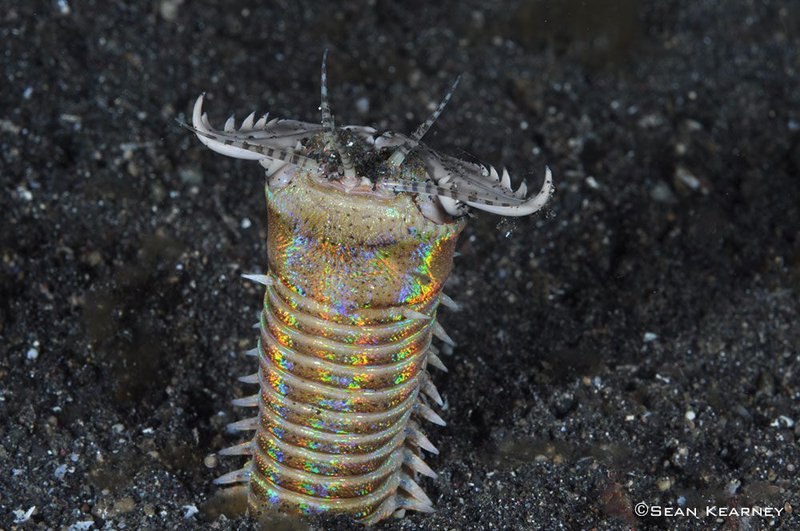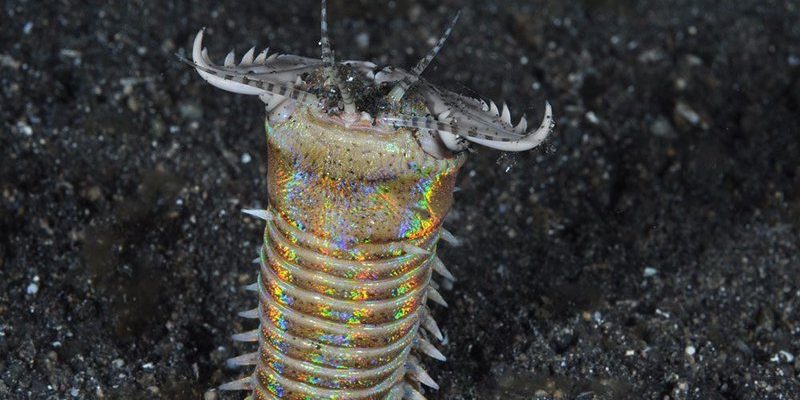
So, what’s the deal with these intriguing creatures? Bobbit worms, or *Eunice aphroditois*, are found in tropical and subtropical waters around the world. With their impressive antennae and sharp teeth, they’re formidable hunters. But understanding their hunting strategies is important not just for marine biology enthusiasts but also for anyone curious about the complexities of life beneath the waves. Are they lone wolves, or do they team up for the kill? Let’s find out!
What Are Bobbit Worms?
Before we dive into their hunting methods, let’s take a moment to understand what Bobbit worms actually are. These marine worms belong to the family of fireworms and can reach lengths of up to 10 feet! They typically burrow into sandy or muddy substrates, leaving only their antennae exposed. It’s a clever way to stay hidden from potential prey as well as predators.
Bobbit worms have a remarkable hunting mechanism. They primarily feed on fish, crustaceans, and other small marine animals. When a suitable target swims close enough, they strike with incredible speed, using their sharp, fang-like jaws to grab their prey. Their camouflage and ambush tactics make them extraordinary hunters.
So, why would we need to know whether they hunt alone or together? Understanding their behavioral patterns allows researchers to gain insights into their ecological role and predatory strategies within marine ecosystems.
Do Bobbit Worms Hunt Alone?
To answer the burning question: yes, Bobbit worms primarily hunt alone. These creatures are solitary predators, using their individual skills to capture prey. They rely on stealth and patience, waiting for unsuspecting fish or crustaceans to wander too close to their burrow.
Their hunting technique is a classic example of ambush predation. They remain still, camouflaged by the ocean floor, until the perfect moment arises. It’s a bit like waiting for the right wave while surfing; they have to be patient and ready for action.
Bobbit worms don’t need to coordinate with others to catch their meals. Their hunting strategy is effective, allowing them to thrive independently. This solitary approach is common among many underwater predators, where stealth often trumps teamwork.
Are There Any Exceptions?
While the norm is solitary hunting, nature can be full of surprises. In certain environmental conditions, Bobbit worms may display semi-social behavior. For instance, when food is abundant, multiple Bobbit worms might inhabit the same area, sharing space in close proximity.
This doesn’t mean they hunt together, though. They still rely on their individual hunting skills. Having fellow Bobbit worms nearby could lead to competition for food rather than collaboration. More worms in one area often mean more competition over who gets to eat first!
Additionally, environmental factors like habitat structure and prey availability can influence their behavior. In heavily populated areas with ample resources, we might see instances where they tolerate each other’s presence but remain independent hunters.
The Evolutionary Advantage of Solitary Hunting
So, why have Bobbit worms evolved to hunt alone? There are several advantages to solitary hunting, especially for creatures that are masters of camouflage and ambush.
– Reduced Competition: By hunting alone, a Bobbit worm doesn’t have to worry about sharing its meal. It can take its time and savor the catch without stress.
– Stealth and Safety: Remaining solitary allows these worms to stay hidden and avoid drawing attention to themselves. The less noise they make, the less likely they are to become prey for larger predators.
– Energy Efficiency: Hunting alone can be less energy-intensive. Bobbit worms can conserve energy while lying in wait, as opposed to coordinating movements or efforts with others.
These evolutionary advantages highlight how solitary hunting can be a successful strategy in the vast and often unpredictable ocean environment.
Comparing Bobbit Worms to Other Marine Predators
It’s interesting to compare Bobbit worms with other marine predators to understand the diversity of hunting methods. For instance, sharks hunt in schools, which allows them to coordinate attacks and overwhelm their prey.
On the other hand, creatures like octopuses often hunt alone. Using their intelligence and problem-solving skills, they can approach prey stealthily and employ various strategies.
Each predator has adapted its hunting style to suit its environment and lifestyle. While Bobbit worms primarily hunt alone, other predators demonstrate that teamwork can also be effective in catching food.
The Role of Bobbit Worms in the Marine Ecosystem
Understanding how Bobbit worms hunt—primarily alone—gives us insight into their role in the marine ecosystem. As solitary predators, they help maintain the balance within their habitat by controlling prey populations.
If Bobbit worms were to hunt in groups, the dynamics of their environment might shift dramatically. They could potentially overtake prey populations, leading to imbalances. Their solitary nature contributes to a harmonious ecosystem where various marine species can thrive alongside one another.
Let’s not forget that their burrowing behavior also plays a part in the health of the ocean floor. By creating tunnels, they aerate the substrate, which can benefit other organisms living in the same habitat.
In the end, Bobbit worms are remarkable creatures with fascinating hunting behaviors. While they primarily hunt alone—using stealth and patience to ambush prey—they occasionally coexist with other Bobbit worms. Their solitary hunting strategy offers several evolutionary advantages, including reduced competition and increased safety.
By appreciating the unique role these predators play in the marine ecosystem, we can better understand the complexities of life beneath the ocean’s surface. So next time you think about Bobbit worms, remember: they may look like they’re all alone, but they’re perfectly adapted to their solitary lifestyle.

